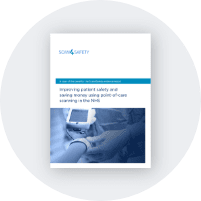

Highly sophisticated, intricate, and wide-ranging, today’s NHS is vastly different from how it used to be.
Modern healthcare is multi-faceted, multi-disciplinary and multi-dimensional (for the better). But with this greater level of intricacy comes the growing complexity of following patients through the system — particularly when it comes to visiting consultant surgeons.
For all the medical and technological advances at their disposal, clinicians are just people too. Highly skilled people under increasing pressure to perform at the highest level. The question is: how can clearer pathways be made in the system so they can focus on doing what they’re here to do: treat patients the right way, in the right place, at the right time?
University Hospitals Plymouth NHS Trust discovered the solution by adopting GS1 standards. It serves around 2m people, with its orthopaedics theatre and neurosurgery departments having additional patients with specific medical needs.
So, relying on outdated paper forms and manual order processes wasn’t an option. In fact, with so many variables at play, these processes added to the pressure piled on to surgeons, which, in turn, had the potential to impact patient safety.
Unprecedented control over the way drugs are formulated, dispensed and prescribed, creating consistency and clarity at every stage.
By not knowing exactly where items had been, or where they needed to be, treatments sometimes were delayed and disrupted. However, by harnessing the power of GS1 standards, the hospital created a unique, automated inventory system that maps patients, products, and locations to their point of care.
Clinicians can now see exactly what resources are needed and when – allowing them to accurately diagnose and treat patients.
“The overwhelming brief for this project was patient safety,” explained Mark Brinsden, a trauma and orthopaedic consultant at University Hospitals Plymouth. “Scanning products before surgery reduces the risk of human error and, due to automatic electronic stock replacement processes, reduces the likelihood of operations being cancelled.
“Staff morale has also been increased because people who are designed to care for patients can spend more time caring for patients, rather than on the reordering and re-equipping of stores.”
University Hospitals Coventry and Warwickshire NHS Trust also took GS1 standards on board to make its blood tracking system compliant with regulations.
As a major centre for trauma care, introducing barcodes to wristbands and documentation has given clinicians confidence in identifying and treating patients throughout the transfusion process.
What’s more, they can now use a one-nurse checking system, helping to free up resources. It’s all helped to improve accuracy, efficiency, and patient care.
With GS1 standards, clinicians can be in the right place at the right time, with laser-like focus on the one thing they’re are there to do: provide outstanding patient care.